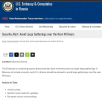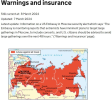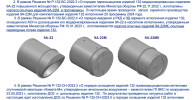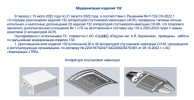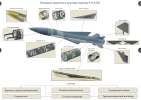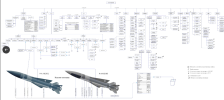https://news.yahoo.com/putin-1999-a...6RWj7JEpOdsmf-Tmn8fUIAAzArHXqxRQ5yEyjdFccvNK6
'Capable of anything': How the '99 apartment bombings explain Putin's rise and regime
Alexander Nazaryan
·Senior White House Correspondent
March 6, 2022·
12 min read
227
WASHINGTON — The first apartment building to come down was in Buynaksk, a Russian garrison town on the border with the breakaway republic of Chechnya, where Islamic insurgents
had fought the Kremlin to a standstill in a brutal, two-year war. They were thought to be responsible for the Buynaksk bomb, which had been placed inside a car and ripped through a building housing Russian border guards on Sept. 4, 1999. Sixty-four people died.
Five days later, a bomb was detonated in the basement of an apartment building in the working-class Moscow district of Pechatniki, killing 106. “It’s like hell underneath,” a first responder would say of looking for survivors in the rubble. Four days after that, in another Moscow neighborhood, a car bomb took 119 lives.
A final bomb went off in Volgodonsk, a southern city. There, 17 died.
In all, more than 300 people died in the apartment bombings, a tragedy that many believe changed the course of Russia, putting it on a trajectory toward authoritarianism and aggression, both of which have been in the spotlight of the world stage as Russia’s invasion of Ukraine now enters its second week.
Russian President Vladimir Putin meets with local veterans of the 1999 operation in Dagestan. (Alexei Nikolsky\TASS via Getty Images)
At the time of the bombings, the country’s new prime minister was a former intelligence agent who had been utterly unknown to most Russians. The prime minister vowed to find the Chechen insurgents he said had doubtlessly committed the bombings, which sowed terror across the land.
The Kremlin would not rest until the perpetrators were brought to justice. “We’ll wipe them out in the s***house,” the tough new prime minister vowed.
His name was Vladimir Putin.
The apartment bombings of the fall of 1999 would cement Putin’s grip on a country that had grown increasingly aimless and chaotic under
President Boris Yeltsin, who was
frequently drunk at public events. But to some, questions about whether Russia’s own security services were involved in the apartment bombings constitute the “
original sin,” whose stain Putin has never bothered to erase.
There is “no serious doubt that Putin came to power as the result of an act of terror against his own people,” says David Satter, who has investigated the apartment bombings perhaps more thoroughly than any other Western journalist. “Someone capable of such a crime is capable of anything,” Satter told Yahoo News in a telephone conversation from Paris. “And the proper attitude towards him is deterrence, not partnership.”
Then-Russian President Boris Yeltsin, right, meets with then-Prime Minister Vladimir Putin at the presidential residence in1999. (STR/AFP via Getty Images)
In the wake of the horrifying bombings, Russia rallied around Putin. Using the bombings as a pretext, Putin launched
a second Chechen war, which would turn out to be longer and more brutal than the first. In
an op-ed published in the New York Times the following fall titled “Why We Must Act,” Putin asked American readers to envision a terrorist attack in Washington or New York: “hundreds perish in explosions at the Watergate, or at an apartment complex on Manhattan's West Side.” He described the decision to send troops back to Chechnya as one he’d made “reluctantly.”
Yeltsin
stepped down on Dec. 31, 1999, appointing Putin as his successor. The new president, enjoying goodwill stemming from the new Chechen campaign, moved up an election to be held in June to March, giving the liberal opposition little time to prepare. It didn’t seem to matter, though, in either Russia or the West. Putin was seen as a savior — one with some discomfitingly authoritarian tendencies but, on the whole, oriented toward the twin beacons of democracy and capitalism.
Two decades later,
Putin’s critics are calling him a “war criminal” for his unprovoked invasion of Ukraine, which has been a sovereign nation since the dissolution of the Soviet Union. Ukrainians claim to have slain thousands of Russian soldiers, and international observers have confirmed hundreds of civilian deaths — with the civilian total likely to be far higher, given the missiles and artillery that have rained down on Ukrainian cities. Yet it remains unclear why Putin decided to wage what so far has been a costly and disastrous war.
Putin has always denied any involvement in or knowledge of the apartment bombings, but two decades have only deepened suspicions about his involvement,
as evidence of his disregard for either human life or the rule of law has mounted.
Rescuers work on the ruins of a Moscow apartment building leveled by a huge explosion, Sept. 13, 1999. (Alexcander Memenov/AFP via Getty Images)
“Centuries of Russian and Soviet leaders treated their subjects as chattel, expendable on behalf of State power,” says John Sipher, who worked as a clandestine Central Intelligence Agency officer in Moscow during the 1990s. “They thought even less of the lives of outsiders in lesser nations. Butchery and terror was an expected part of keeping themselves in power. It is as consistent as it is ugly.”
At the time of the bombings, Russia was a much more open society than it is today — it would take years for Putin to shut down independent media outlets and stifle political dissent. Journalists were thus able to quickly seize on all available public evidence to question the official narrative about the bombings.
From the start, the notion of Chechen involvement seemed dubious. There would, much later, be terrorist attacks in Moscow and St. Petersburg, but only after years of callous Russian occupation.
In 1999, the conflict was still relatively confined. Russian forces had already been amassing on Chechnya’s doorstep, making them an easy target for a potential attack. But terrorists were alleged to have driven almost 2 thousand miles, past military checkpoints, in cars presumably loaded with explosives. Both of the Moscow apartment buildings were on the city’s outskirts, far from the resplendent symbols of power, status and wealth huddling around the Kremlin.
A TV grab taken Sept. 16, 1999, from the Russian television channel NTV shows a destroyed apartment building in the Russian southern city of Volgodonsk following a bomb explosion. (STF/AFP via Getty Images)
Then there was speaker of the Duma (Russian parliament) Gennadiy Seleznyov’s announcement about a bomb exploding in Volgodonsk. Such a bomb would explode — three days after he relayed news of that blast. Attempts to question Seleznyov proved fruitless.
The most damning evidence of Russian involvement, however, came from Ryazan, an ancient city steeped in Russian history not far from Moscow. On the evening Sept. 22, residents in an apartment building there saw a suspicious Lada sedan on the street below, its license plate crudely altered with a piece of paper. Responding officers of the local police found a bomb in the basement. It had been made with hexogen, a military-grade explosive (known in the West as RDX) that was only available, according to Satter, at one heavily guarded factory in the Ural Mountains, to which Chechen insurgents could not have gained access.
These details were largely lost in the breathless reporting about a foiled terror attack. The following night, Putin announced an aerial assault of Grozny, the Chechen capital, in what would prove the first salvo of the second Chechen War. “Until we win,” he said. “And we will win.”
Only it soon became clear that Chechens had nothing to do with the foiled Ryazan bombing. Three officers of the FSB — the post-Soviet version of the KGB — were arrested for the bombing, leading FSB chief and Putin ally Nikolai Patrushev to fumble for an excuse. “It was not an explosion somebody foiled; it was a security training exercise,”
he claimed. “The sacks contained only sugar, there were no explosives inside.”
A view of damaged building following a shelling in Ukraine's second-biggest city of Kharkiv. (Sergey Bobok/AFP via Getty Images)
If so, nobody had told Ryazan’s own FSB office. “This announcement came as a surprise to us,” officials there said in the kind of sharp dissent from the Kremlin line that would soon become taboo in Russia.
There was never an official investigation into the bombings, and Russian society as a whole moved on. Putin, though, remained the same cold-blooded authoritarian some thought had emerged on those September mornings when families sifted through the rubble, looking for loved ones.
“If it can ever be determined beyond a shadow of a doubt that Putin and Patrushev orchestrated these bombings as a pretext to launch the Second Chechen War — and also launch Putin’s national political career — then the entire edifice of this regime rests atop a pile of Russian corpses,” says
Michael Weiss, a longtime Russia observer who told Yahoo News that he is certain, like the journalist Satter, that Putin was behind the apartment bombings.
Russian investigators and journalists who tried to investigate the bombings often ended up dead. Among them was Anna Politkovskaya, a fearless critic of Putin who worked for Novaya Gazeta, one of the last remaining left-leaning outlets in Moscow today. She aggressively covered the Second Chechen War; in 2006, Politkovskaya was assassinated in her apartment building’s elevator.
“The murder that killed free media in Russia,”
the Guardian would much later reflect of Politkovskaya’s death, which came on Putin’s 54th birthday.
A toy and a notebook lie among the debris by the apartment block in 6A Lobanovsky Avenue, which was hit with a missile, in Kyiv, Ukraine. (Anastasia Vlasova/Getty Images)
Two years later, the FSB agent turned defector Alexander Litvinenko was assassinated in London, where agents slipped a radioactive poison into his tea. He had worked with Politkovskaya on trying to investigate the Moscow apartment bombings, which he believed were carried out by the FSB.
Still, suspicions festered that something was amiss, even as Putin’s power grew. “They say it was the Chechens who did this, but that is a lie. It was Putin's people. Everyone knows that. No one wants to talk about it, but everyone knows that," a Muscovite who lost family in one of the apartment bombings
told GQ in 2009 for an article that the magazine’s American publisher, Condé Nast,
was too afraid to run in Russia.
The irony is that by 2009, nobody in Russia — or the West — could have had any illusions about who Putin was.
Mere weeks after the bombings, it was revealed that
Putin had spurned the help of Western nations after the nuclear submarine Kursk, rocked by an explosion but with 23 sailors still apparently alive, had sunk to the floor of the Barents Sea in the Arctic Circle. Putin, meanwhile, vacationed at a seaside resort on the Black Sea. All 118 people on board were eventually found dead. When he later met with the sailors’ widows, he was discomfited by their grief, allegedly
complaining that they were local prostitutes hired by opponents to rattle him.
Russian President Vladimir Putin speaks during his annual press conference at the end of last year in Moscow, Russia. (Mikhail Svetlov/Getty Images)
Meanwhile, the Second Chechen War was turning out to be even more brutal than the first. Torture was common, in particular at a Russian prison camp called Chernokozovo. “The torture described is so systematic it cannot be the work of a rogue unit acting on its own,”
a Guardian investigation concluded in the fall of 2000, just over a year after Putin had launched the offensive.
And yet when George W. Bush met Putin in 2001, he came away profoundly impressed. “I looked the man in the eye,”
Bush said after their summit in Slovenia. “I found him to be very straightforward and trustworthy. We had a very good dialogue. I was able to get a sense of his soul; a man deeply committed to his country and the best interests of his country."
If that seems like a cringeworthy assessment, then-Secretary of State Hillary Clinton’s bungled attempt at a “reset”
in 2009 didn’t fare much better. The year before, Putin had invaded Georgia. In 2014, he launched his first invasion of Ukraine, annexing Crimea and setting the stage for his all-out attack this year. Neither country was in NATO, leaving the United States as a bystander to Putin’s aggression.
“Every American president has gotten Putin wrong,” says Satter, who in 2014 earned the distinction of being the first Western journalist since the end of the Cold War to have been expelled from Russia. “Some have gotten him outrageously wrong."
This combination of pictures shows Russian President Vladimir Putin shaking hands with U.S. Presidents (from top left) Bill Clinton, George W. Bush, Barack Obama and Donald Trump. (Stephen Jaffe, Jim Watson, Alexey Nikolsky, Mikhaul Klimentyev/Ria Novosti/AFP via Getty Images)
Satter says that while Donald Trump slathered Putin in fawning rhetoric, his foreign policy toward Russia was “better than people realize,” perhaps because his perceived affinity for the Kremlin strongman led Congress and the foreign policy establishment to compensate with a countervailing toughness toward Moscow.
Biden came into office clear-eyed about how fraught the postwar peace had become. He met with Putin in June; they were to meet again last month in hopes of staving off war, but then Putin turned a standoff on the Ukrainian border into outright war. Now it is uncertain when, exactly, they will speak.
Now the ruined apartment buildings are in Kyiv and Kharkiv, not Moscow, and there is no doubt about Putin’s role in the carnage. “Aside from the brave, innocent victims in Ukraine,” says former CIA officer Sipher, “it is the Russian people who will pay the price for Putin’s delusions.”

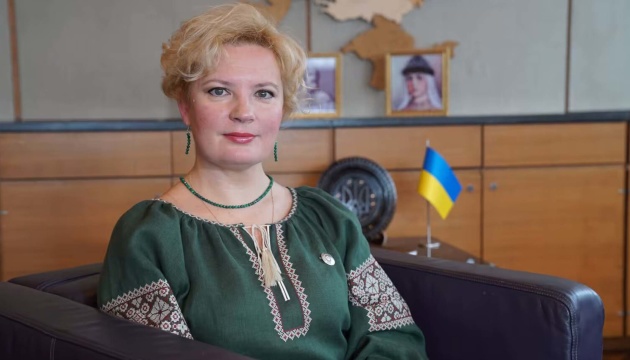
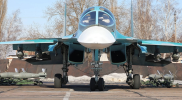
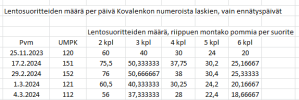
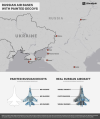
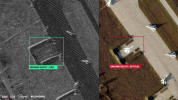
 presented scenarios of possible directions of russian strikes in Ukraine to leaders of French parties.
presented scenarios of possible directions of russian strikes in Ukraine to leaders of French parties.
